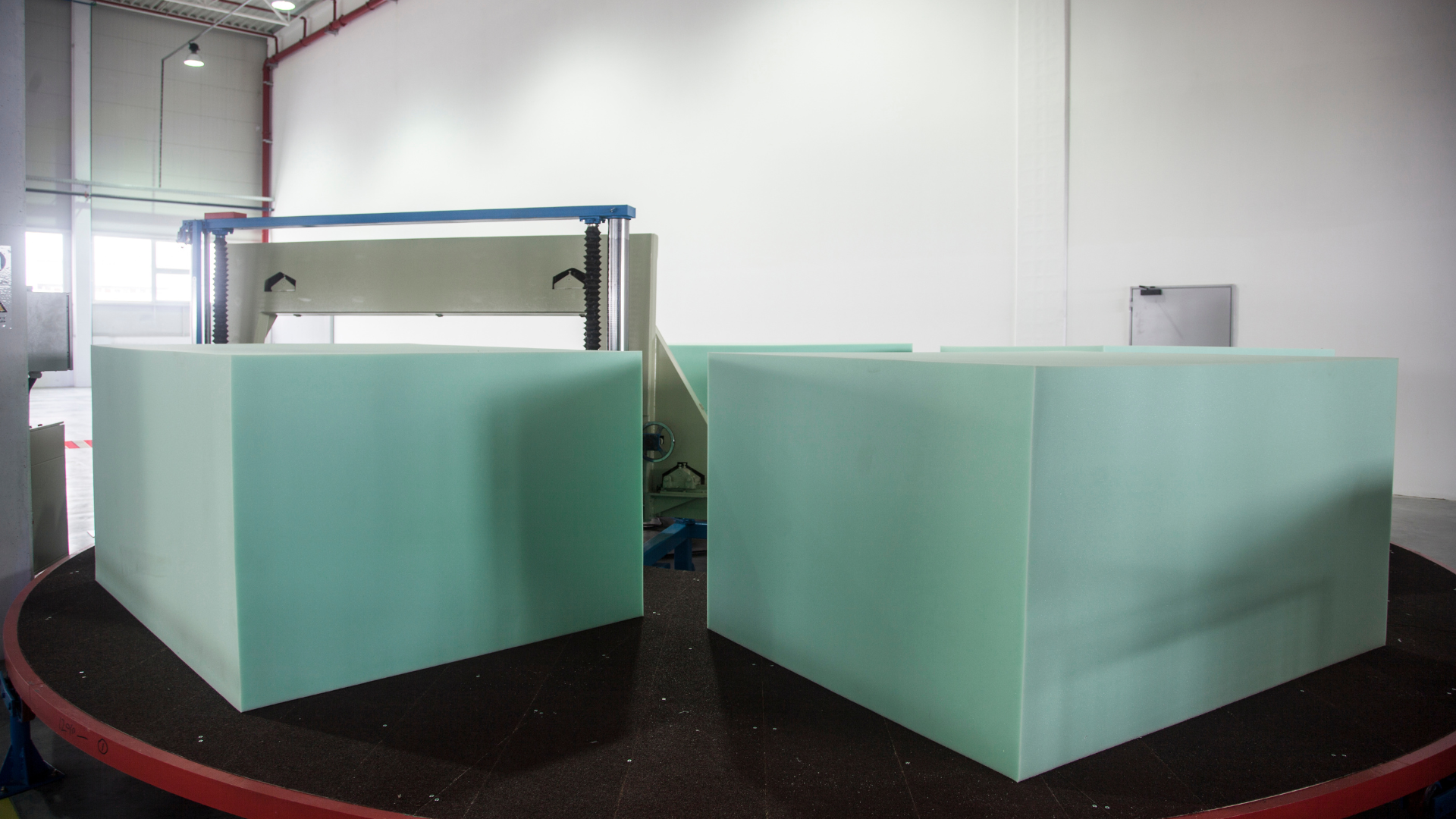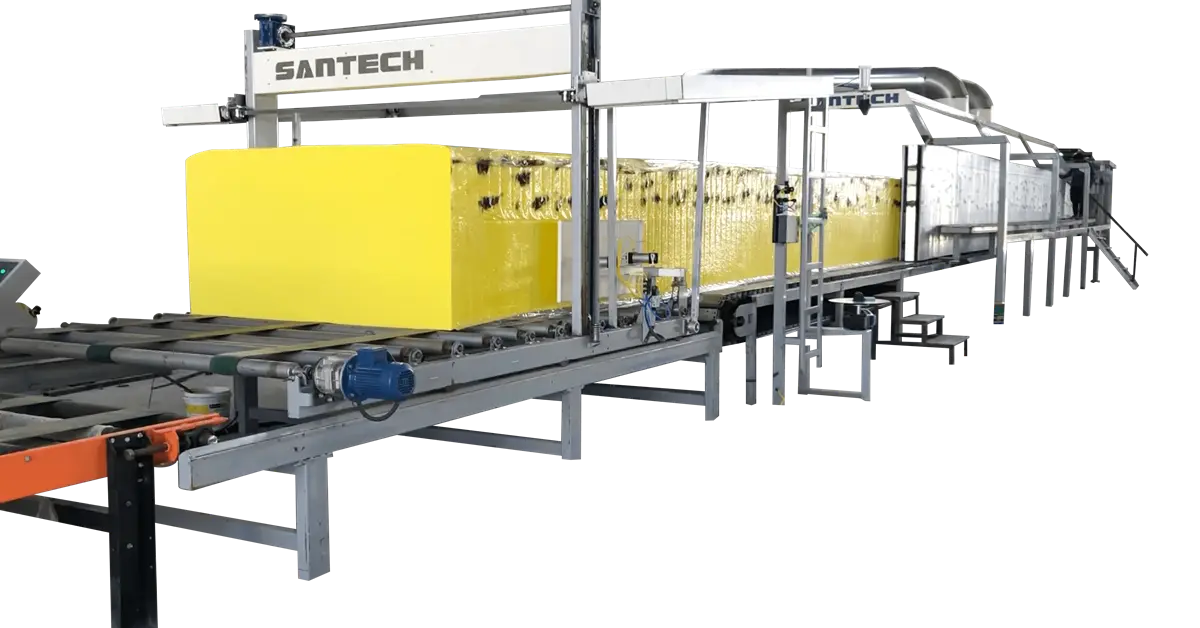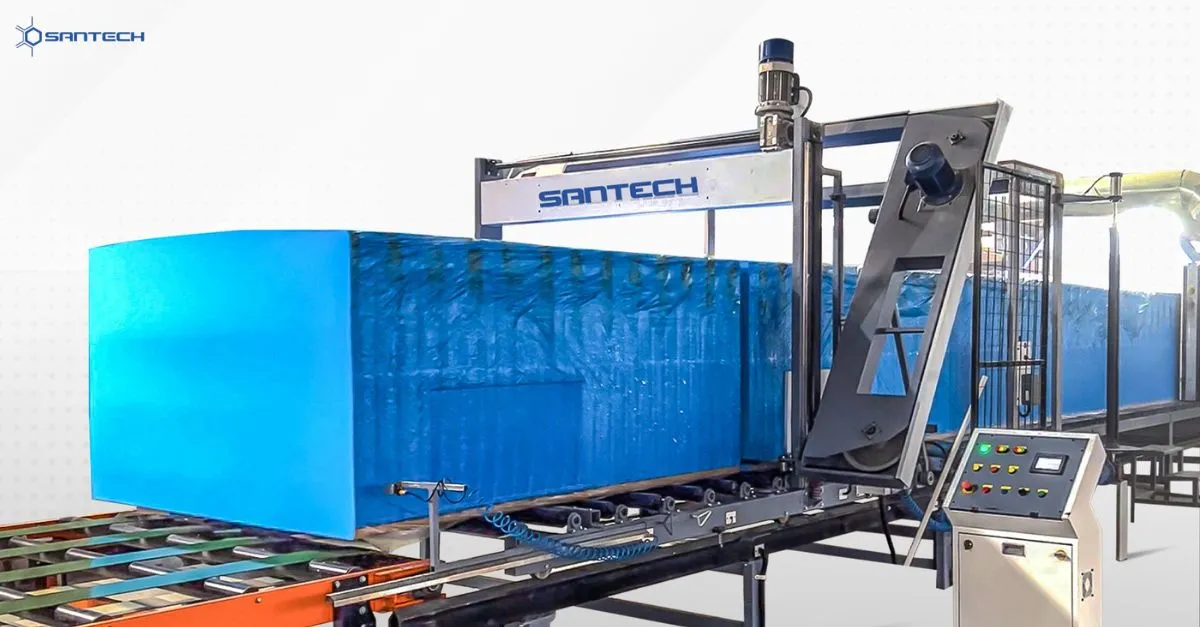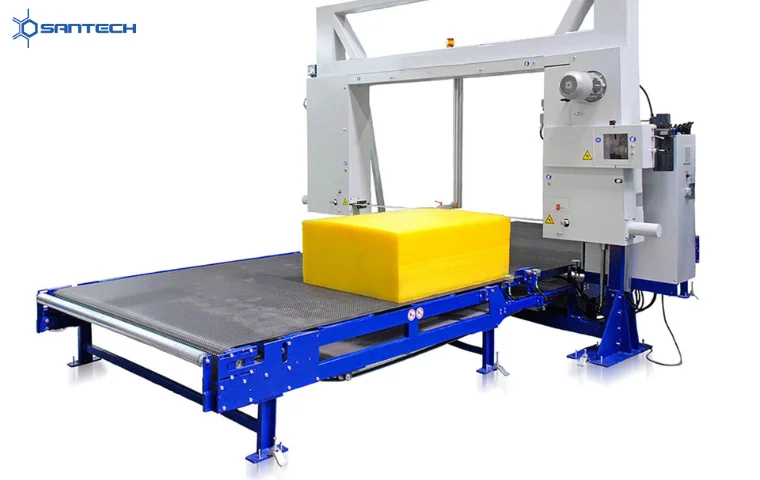Foam production is a crucial aspect of many industries, including packaging, automotive, and furniture. Traditionally, foam is produced using batch processing methods, which involve melting and mixing raw materials in a single step. However, this method has several limitations, such as low production rates, limited material options, and difficulty controlling foam density and cell structure. To overcome these challenges, manufacturers are turning to slab stock foam machines, which offer numerous advantages over traditional batch processing methods.
In this blog post, we will delve deeper into understanding these machines, their advantages, and why they are the ultimate solution for foam production.
Understanding Slab Stock Foam Machine
A slab stock foam machine is a continuous processing technology that produces foam by heating and continuously mixing raw materials. The machine consists of a series of zones where different chemical reactions occur, forming foam. The raw materials used in slab stock foam production include polyol, isocyanate, and additives, which are mixed and fed into the machine continuously.
The slab stock process involves several stages, including preheating, reaction, and cooling. The raw materials are melted and purified during preheating to remove impurities. In the reaction stage, the raw materials are mixed and reacted to form a polymeric foam. Finally, the cooled foam is cut into desired shapes and sizes using cutting tools.
One of the noteworthy benefits of these foaming machines is their ability to produce a variety of foam densities as well as cell structures. By adjusting the temperature, pressure, and residence time during the reaction stage, manufacturers can customise the foam properties to suit their specific uses. Additionally, slab stock foam machines can produce a consistent and uniform foam quality, which reduces the need for post-processing steps like grinding or polishing.
Advantages Of Slab Stock Foam Machine
1. Cost Efficiency
The continuous and automated nature of slabstock production minimises operational costs significantly. By streamlining the entire production process, manufacturers can save on labour, energy, and raw material costs. This efficiency enhances cost-effectiveness and contributes to the overall sustainability of the manufacturing process.
2. Versatility
The versatility of slabstock foam production is a game-changer for manufacturers. This method allows for precise control over the formulation, enabling the production of foams with a wide range of properties. Whether it’s adjusting firmness levels, density, or other characteristics, this machine offers unparalleled flexibility, catering to diverse industry needs.
3. High Productivity
The continuous flow of the slabstock production process translates to higher productivity compared to traditional batch methods. This efficiency is crucial for meeting the demands of rapidly evolving markets. Manufacturers can produce larger quantities in a shorter time frame, ensuring a consistent and timely supply of foam products.
4. Consistent Quality
Precision is the hallmark of slabstock foam production. The ability to control the foam-forming process ensures consistent quality in the final product. Manufacturers can maintain uniformity in foam properties, providing customers with reliable and predictable performance. This consistency is a significant advantage in industries where product quality is paramount.
5. Reduced Waste
The open-mould system of slabstock production minimises material wastage. Unlike closed-mould processes that can lead to excess trimming and discarded materials, the continuous nature of slabstock production significantly reduces waste. This eco-friendly approach aligns with modern sustainability goals, making it an attractive choice for environmentally conscious manufacturers.
6. Customisation Options
Manufacturers using this machine have the flexibility to customise foam properties to a remarkable degree. This includes adjusting density, firmness, and other characteristics according to specific requirements. Such customisation options empower manufacturers to cater to niche markets and unique customer preferences, expanding the range of possible applications for the foam.
7. Energy Efficiency
Energy efficiency is a key advantage of this foam machine. The continuous and automated production process, combined with optimised formulations, ensures that energy consumption is kept to a minimum. This not only reduces operational costs but also positions the slabstock method as an environmentally friendly choice in the broader context of sustainable manufacturing practices.
8. Quick Production Cycles
The continuous workflow of this machine results in shorter production cycles. This quick turnaround is a strategic advantage, especially in industries where responsiveness to market demands is crucial. Manufacturers can adapt swiftly to changing requirements, maintaining a competitive edge in dynamic markets.
9. Ease Of Handling
Slabstock foam blocks are inherently easier to handle compared to other forms of foam. Their uniform structure and the absence of complex shapes simplify logistics and distribution processes. Manufacturers benefit from streamlined operations, reducing the challenges associated with handling and transporting foam materials.
10. Wide Application Range
The versatility of foams produced through slabstock technology translates into a wide application range. These foams find use in various industries, from furniture and bedding to automotive and beyond. The adaptability of slabstock foam makes it a preferred choice for manufacturers seeking a single, versatile solution for diverse manufacturing needs.
In Conclusion
In foam production, the slab stock foam machine stands tall as the epitome of efficiency, cost-effectiveness, and quality. Its continuous production process, coupled with the advantages mentioned, positions it as the best foam machine in the market today. As industries evolve and consumers demand higher standards, the slab stock foam machine remains a crucial player, shaping the comfort and quality we expect from everyday products.




